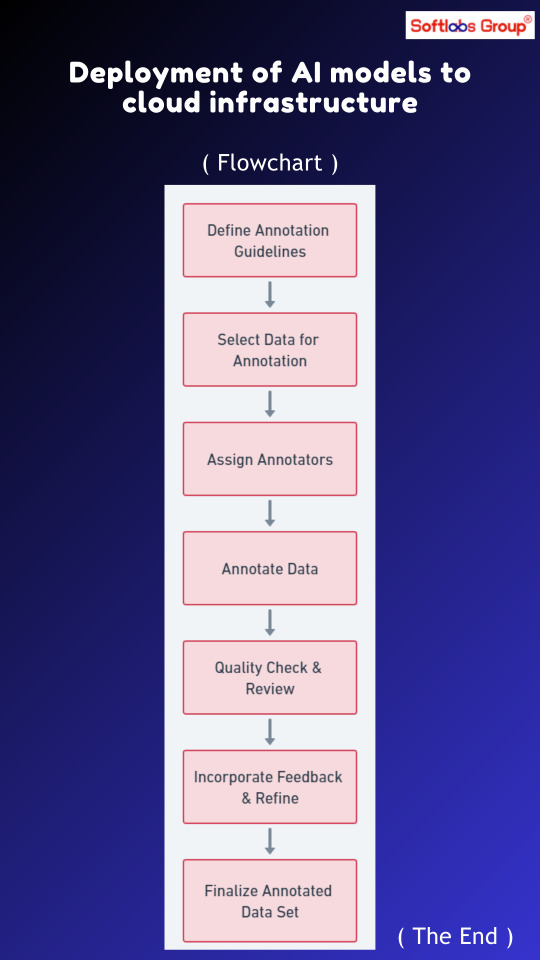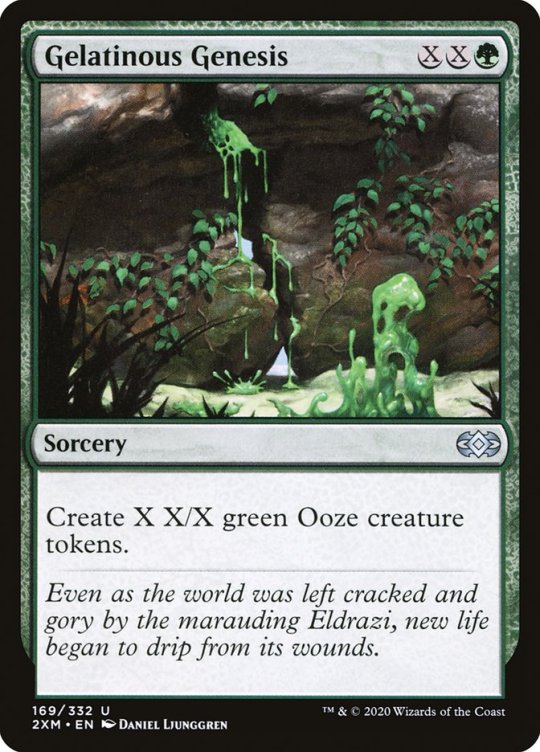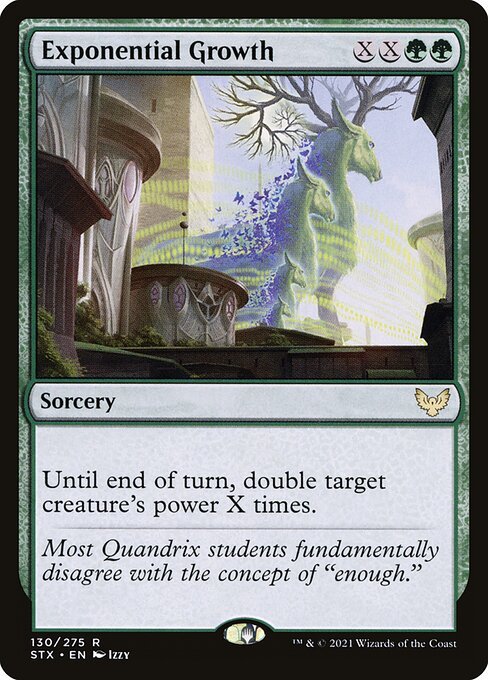#Auto-Scaling
Explore tagged Tumblr posts
Text
Expectations vs. Reality—Scalability vs. Elasticity in Cloud Computing

The concept of scalability vs. elasticity in cloud computing often gets mixed, but the reality hits different! In software product engineering service, both scalability and elasticity are needed.
In any system design, both scalability and elasticity hold a distinct significance. It helps businesses to keep their system intact with the latest features, capabilities, and resources. However, deciding on the right steps is still a basic software product development need. We'll eventually talk about the comparison between scalability vs. elasticity in cloud computing in detail in this blog.
What is Cloud Computing in a System?
Its foundation relies on on-demand delivery of servers, data storage, and systems over the internet for users to access them without owning them. underneath the infrastructure.
Cloud computing is the talk of the time, and capability and elasticity serve as top database solutions for handling high traffic. By knowing the static differences between the system scalability and system elasticity, you can make smarter business decisions about its utilization.
Let's get a quick introduction before diving further into scalability vs. elasticity as a software product engineering service—
CTA 1:
Make your Legacy system more scalable!
Get top database solutions for handling high traffic by Acquaint Softtech! You can consult with the best experts and get relevant business insights to help with your software product development project every now and then!
Let us know!
System Scalability: An Overview
Scalability within a system refers to a system's core capability to handle increased workloads by optimal resource utilization and without compromising its functional perspectives.
System scalability is more of a long-term strategy; taking the right steps ensures steady business growth. It's one of the two buzzwords in the world of cloud computing, the second being elasticity. People usually expect more from either of these two to be working similarly, but it is to understand for the businesses that these are two different things to get done!
System Elasticity: A Review
In contrast to system scalability, elasticity is something on a different level. Its foundational concept relies on the system's ability to dynamically adjust and manage its resource allocations based on workload fluctuations.
However, system elasticity is a short-term solution for effortless system management. In comparison to system scalability, elasticity serves to very different purposes. By implementing the right elasticity and network optimization strategies for scalable applications, businesses can explore cost-effective system elasticity and adaptability in modern IT infrastructure.
Scalability Vs. Elasticity In Cloud Computing: Expectations & Reality
The expectations and reality differences of scalability and elasticity within a software product engineering service hold their own practical implementations. Here's a detailed breakdown of anticipating and leveraging these two features within a system—
#1: Expectation: “Scalability and Elasticity Are Similar”
Reality:
It's a half-truth that system scalability and elasticity are safe. The reality is that they are closely identical in terms of business implementations. So, being closely related doesn't mean they're identical on every stage and level of the work process.
Scalability within a system is its ability to grow by the addition of more resources. It is about making your business grow eventually with time.
Elasticity is about managing the resource dynamics in real-time based on the system requirements. It's about handling multiple traffic spikes frequently in a shorter time duration.
#2: Expectation: "Scalability alone can handle resources without performance degradation."
Reality:
It's not just about system scalability when it comes to business growth. It's a long-term process that requires many cost-effective measures to operate constantly. If a business will be more predictable, you can make better plans to align with your business goals. Proper scalability requires pre-planning for resource allocation and infrastructure design.
Implementing best practices for a scalable system architecture, like vertical/horizontal scaling, will help you out in such cases. If not done proficiently, it can lead to cost overruns, ultimately making an inefficient system.
#3: Expectation: "Elasticity can achieve fully automated scaling without any workload challenges."
Reality:
Elasticity serves as a top database solution for handling high traffic, but it comes with its automation challenges. For example, if accurate monitoring techniques will not be involved, then elasticity may not be able to potentially optimize complex workloads. It needs cost-efficient auto-scaling rules and regulations to minimize your budget.
Frequent scaling events within a system lead to unexpected bills and cost volatility. Even if you're adopting high-defining techniques like resource provisioning, it may lead to latency, further leading to performance bottlenecks.
#4: Expectation: “Scalability can work automatically as soon as businesses adopt cloud computing.”
Reality:
It's not over when you adopt the cloud computing techniques for the system; actually, the work starts from there. Maintaining a system's scalability requires prompt planning and configuration with budget constraints in mind. Cloud computing, though, makes the scaling possible to a significant extent, but it's not fully automatic, to be honest.
Ask any expert of a reputed software product engineering company; they will tell you the reality in detail. First, you must configure the right auto-scaling guidelines according to your system and then the right scaling model. Continuous system monitoring and testing are applicable to align with the scalability needs.
If your system code and architecture are not concurrent, then even the heftiest of cloud servers aren't going to save you.
#5: Expectation: “Elasticity always saves a lot of business money.”
Reality:
Relying on elasticity will not always save you tons of money; it can go the other way with too much overconfidence!
System elasticity helps avoid data overprovisioning, but only when it's fully configured and planned. Poorly configured data causes frequent scaling, resulting in driving up the system costs. Elasticity planning must be done in a way that all the system resources could be utilized to their full extent. Reserving the resources but not utilizing them will waste your expenditure.
So, plan to couple your system elasticity with smart resource management, or else be ready to pay hefty bills on system scaling more often.
#6: Expectation: "Scaling and system elasticity can provide instant flexibility and infinite growth within the system."
Reality:
It requires much effort to maintain this expectation and make it a reality with time. Achieving great system flexibility works slowly, not instantly. It requires a robust, strategic business architecture to adhere to the latest market processes, smart business optimization, and ongoing business trends.
Both system scalability and elasticity hold a modern approach in cloud strategies, but they aren't any magic wands either, meaning proper planning is needed for sure to achieve both milestones. The key lies in building a highly adaptable system with the latest cloud computing system that embraces automation, statelessness, and modularity.
#7: Expectation: “Everything can be scaled easily.”
Reality:
It's a half-truth, as easy scaling is only limited to a few system components, initially. Other components don't scale that easily and require significant effort to perform such tasks. For example, you can scale stateless components with ease by applying horizontal scaling methods. In a microservice architecture, the services are loosely coupled, making space for many databases, caches, and file storages to scale better horizontally.
Whereas the same cannot be elastically scaled that easily, the third-party integrations can also become an issue if not controlled or managed. You must adopt the latest cloud-native system architecture to meet your users' demands eventually. hence, understanding the real capabilities of the system is important, and more important is to understand its limitations!
#8: Expectation: “Scalability is costly, and it is only for large enterprises to afford.”
Reality:
Scalability is a term introduced for small startups to eventually grow bigger with regular adaptation. They can benefit the most from continuous work on business scalability and elasticity. You just need to know the right scaling metrics, such as—
MVP and product-market fit standards
Cost-efficient system growth
Effortless system accountability planning to avoid replanning
Expert tip: The earlier the adoption, the better the scalability!
Businesses need to align their cloud strategies with the relevant system scalability and elasticity techniques. System scalability provides a more predictable business growth, whereas elasticity offers better management with work fluctuations. Based on workload patterns and the needs of the time, businesses must optimize their cloud strategies.
Scalability Vs. Elasticity In Cloud Computing: Major Differences
Concept
System Scalability
System Elasticity
Working
Adds resources to handle workloads.
Adjust resources to handle work demands.
Timing
According to increased work demands
Real-time dynamic scaling
Resource Allocation
Manually
Automatically
Response Time
Time-taking implementations
Instantaneous
Work load Management
Manually
Automated
Cost Effectiveness
Leads to over-provisioning
Enabled cost optimization
System Flexibility
Flexible but not instantaneous.
Instant and automated resource adjustments.
System Efficiency
Underutilized resources due to low demand
Optimized resource utilization
System Complexity
Simple to manage
Requires automation and monitoring
Use Cases
Best for systems with predictable patterns
Best for applications with unpredictable and highly variable workloads
CTA 2:
System scalability or elasticity—We Do Both!
Acquaint Softech is a leading software product engineering company that excels in availing top-rated affordable business solutions for your digital brand. Just let us know your requirements, and we'll blend classy system scaling techniques to create the most result-driven product!
Let's talk!
Conclusion—The Future of Scalability and Elasticity
Rethinking the future of scalability vs. elasticity in cloud computing is vital as the world progresses toward serverless resource provisioning. Automatic scaling-based platforms like AWS, Google Cloud, and Azure offer immense scaling utilities as per the resources, helping developers avoid overprovisioning. It is indeed one of the most cost-effective choices you can ever make for your business!
Understanding that both system scalability and elasticity are needed in order to maintain a legacy system well is important. Both approaches are necessary as AI and ML both are now giving tough competition in these cases. If you are keen to know more, simply contact a software professional to get much more detailed insight.
FAQs
1. What does scalability mean in cloud computing?
A system's core ability to manage increased workloads without sacrificing its functioning is called system scalability. It is required in every software product development legacy system to remain market-fit for a longer time.
2. What does system elasticity mean in cloud computing?
A system's ability to dynamically adjust the resources based on the system's demand and need is termed system elasticity. It basically allows the system to auto-scale up and down as required when demand increases or decreases, for optimizing business costs.
3. Can I use scalability and elasticity together within my legacy system?
Absolutely, you can easily implement either option's scalability vs. elasticity in a cloud computing system, or both, accordingly. You must consult a software engineering expert to learn more about the issue and how to implement both system scalability and elasticity well within the system.
4. What are the best tools for infrastructure scaling and elasticity?
There are many scalability tools for system infrastructure and elasticity. You must first know the exact system requirements and then figure out which tech stack will prove to be the best solution for your business. For example, to get the best system scalability, you can consult top experts and learn more details about load balancing and cloud storage solutions. Plus, top-rate system elasticity tools include Auto-scaling groups (AWS), and monitoring systems like CloudWatch.
#scalability#elasticity#cloud computing#cloud infrastructure#system scalability#elastic infrastructure#cloud architecture#software product engineering#infrastructure scaling#high-traffic systems#system performance#cloud optimization#serverless computing#load balancing#scaling strategies#cost-effective cloud solutions#system architecture#auto-scaling#resource provisioning
0 notes
Text
Scaling Azure Container Apps for Peak Performance
In our last blog, we dove into optimizing deployments with Azure Pipelines, covering strategies for choosing the right agents and securing environment variables to ensure smooth, reliable updates. Now, let’s take things a step further. Once you’ve streamlined your deployment pipeline, the next challenge is making sure your Azure Container Apps can easily handle fluctuating demands. In this final…
#auto-scaling#azure best practices#Azure Container Apps#azure monitor#cloud cost optimization#cloud scaling#container app scaling#dynamic scaling#KEDA#responsive applications#scaling in azure
0 notes
Text
What's new in Azure app service at Build 2024: Key announcements and features

The integration with the Visual Studio improves the development and deployment process of the services and the cooperation with Nvidia and AMD as hardware partners brings high-performance hardware to boost the AI offerings. Read More. https://www.sify.com/technology/whats-new-in-azure-app-service-at-build-2024-key-announcements-and-features/
#AzureAppService#MicrosoftBuild#MicrosoftAzure#Auto-Scaling#SidecarContainers#VisualStudio#Nvidia#AMD MI300X
1 note
·
View note
Text

Visualize the deployment of AI models to cloud infrastructure with our comprehensive diagram. Follow steps including model preparation, containerization, deployment orchestration, scaling, and monitoring. Simplify the process of leveraging cloud resources for efficient AI model deployment. Ideal for cloud engineers, AI developers, and DevOps professionals. Stay updated with Softlabs Group for more insights into cloud-based AI solutions!
0 notes
Text
See this may be a hot take but I just don’t think it’s that important to make sure I see your character’s custom eye mod and make up mod when I play the game
I am way too preoccupied with Avi’s handsome face to care
You understand
#this is about mare and syncshell drama#again#also the idea of random mods auto downloading onto my computer….horrifying to me tbh#like i’m happy to download scales and hair because it’s about the silhouette#for friends#but the lil details? i’ll just enjoy your gposes for that
16 notes
·
View notes
Text

some tarots for @puddleslime it was very fun to attempt the rider tarot style and i learned about screentones
#seas draws#af2024#dnd#changeling#i didnt use a brush for the screentones. i didnt use some tool or plug in. i did a third worse thing!#used auto screentone on a full screen dot pattern then scaled it and rotated it by hand
23 notes
·
View notes
Text
X spells in magic the gathering are where the fact it was designed by a maths guy really pops. Majority of the maths in magic is "can I pay cost" or "is damage dealt enough to kill a creature/player", so playing around with that number being variable rather than fixed makes some sense, and maths has X as a default variable, so you get fireball

right there in the first set - variable cost for variable damage, 1:1. This spell is great for ending games, which makes up for it's poor rate for the time (see lightning bolt, where you pay 1 mana for 3 damage)

So now you can use X for the cost to give a linear scaling effect, such as additional counters on creatures


Where we get really mathsy next is the relatively few examples of effectively "do something X times, X times" for example:


These two cards are roughly equivalent in what they do to the previous two - but appear to scale at a much worse rate, having to pay two or three times the cost for each time you do "X" but the trick here is these aren't actually scaling linearly, they're scaling quadratically, making them much more effective than they seem.
Anyway all this to say that sometimes evaluating how good a magic card can require understanding quadratic scaling!*
*but almost never will because these effects are almost certainly intentionally costed too highly and attached to traditionally uncompetitive effects, likely so that players don't actually have to think about quadratic scaling. This is probably for the best. Also there's one card that scales exponentially (2 to the power of X) rather than quadratically (X to the power of 2). It's literally called exponential growth.

#mtg#magic the gathering#quadratic scaling#richard Garfield phd was a maths professor but maths guy gets the point across#exponential growth#maths#just throwing tags on here. hashtag whatever#i hope this auto does read more. sorry if this has taken forever to scroll past.
51 notes
·
View notes
Text
god all my recent listings on my website somehow have the fucking blurriest photos in the world. something in the upload is fucking compressing the shit out of my pictures because they are CLEAR and CRISP and ZOOM-INABLE on both my ipad & phone…. bigcartel you got a big storm comin (i sent them a message about it 😑) (can’t make me look like a FOOL with BLURRY PRODUCT PHOTOS)
#i went into the shop creator to look for an auto-scale or even suggested dimensions setting but there’s nothin#and none of my googling got me results either… maybe they’re nerfing me specifically…..#chatpost
5 notes
·
View notes
Note
The height chart gets even funnier when you consider that Rick gives Kirby piggyback rides. Kirby, that hamster is only up to your feet.


i think that for reasons to do with this the earth accurate sizes doesn't actually work very well when you try to extrapolate it out, and i did intend it as a joke!! it's funny and i enjoy it, but it falls apart the second you try to consider them functioning with others 😂
like... is kirby small enough to be comfortably piggybacked by hamster sized rick? then he's too small to be held in coo's claws, let alone to fit in kine's mouth! this would likely be the case even if we just took kirby's "canon" size of 8-9 inches but plonked him in an earth accurate sizing for everything else
then, is king dedede a penguin accurate size (king penguin size: 85–95cm) or is he comparative to a human adult? either way, he'd be smaller than kine, as mola mola average 250cm tall (at least according to wikipedia. other sources say 300cm longs and up to 450cm tall) and easily dwarf humans here on earth.
or does dedede have to be comparative to kirby, who is comparative to rick, who is an 18cm tall hamster, making kirby probably 10cm at best, making dedede probably half the size of a king penguin though maybe closer to a blue penguin (45cm), meaning that kine could easily be up to ten times his height--
in general i kind of just prefer to size them comparatively, starting from kirby, and considering individual characters Bigger or Smaller. as much as i'd love to see an enormous semi-realistic sunfish kine basking happily in the ocean surrounded by tiny friends, i think that it's easier for me to work on a "kirby" size scale and consider them all aliens, at the end of the day 😂

this seems likely, given that female mola mola are apparently bigger than the boys! they can also supposedly spawn an absolutely mindboggling three hundred million (sorry. hang on. three HUNDRED million!?!?!?!?!) eggs at a time, so i hope you're all really really looking forward to seeing a Lot lot more of Kine around.
#you could work in a sort of 'kirby auto scales to his animal friends' mechanic i suppose. he's certainly been tinier before!#that could be enjoyable in a world building sense! you'd see many small items look BIG when you were with rick and vice versa with kine!#but i'd feel bad assigning enormousness to kine! he'd be quite difficult to get into just about any location and he's already a bit of a#dare i say#fish out of water#definitely fun to play around with in individual circumstances but hard to work into a broader world-scape. not impossible though!#asks
28 notes
·
View notes
Text






1948 Ford Super Deluxe Convertible Coupe
Issued by Auto-Buff Models. It is 1:43 scale and crafted in white metal. The model was built by Wayne Moyer and is from his collection. It is finished in Maize Yellow.
5 notes
·
View notes
Text

basic threshold png of the first badge from this post.
#I really love this design. wanna make a shirt with it purrhaps.#I started trying to make a vector out of it but couldn't quite figure out a pleasing way and I'm tired now so I'll try again tomorrow maybe#anyone have any suggestions for how to get a clean smooth vector out of this? the low resolution is a bit of an obstacle.#I might try scaling up the original image by some method then thresholding it and auto-tracing the result of that. idk.
49 notes
·
View notes
Text






When I can't drive yet, I already have a mini garage of my own haha, which has a mechanic, an engine, and a vintage garage with glued so many nice pictorials. This garage is 1:64 real scale, 1:64 American-style garage miniature scene model.
#Nostalgic Garage#Miniature Model Scene#Miniature Garage Scene#Garage Collectibles#DIY Garage Model#Auto Repair Miniature#1:64 Scale Garage'American-style Garage#Car Tuning#Garage Decor#diorama#miniature
3 notes
·
View notes
Text

#trevor philips#gta 5#doodle#scrapbook#scribble#quick sketch#small scale#drawing#sketch book#figure drawing#character drawing#grand theft auto#rockstar games#gaming
18 notes
·
View notes
Text
Il parcheggio multipiano
Quante volte abbiamo usato un parcheggio multipiano? Questa tipologia di parcheggio è, in generale, presente nel centro delle città, dove le aree edificabili sono molto costose ed è obbligo realizzare un parcheggio multipiano sviluppato in altezza (fuori terra) o in profondità (interrato). In alcuni parcheggi multipiano fuori terra di non recente costruzione l’ubicazione sia degli ingressi e…
#ascensori#auto#casse#ingresso#ingresso pedonale#parcheggio#parcheggio interrato#parcheggio multipiano#parcheggio vuoti terra#percorso#piano#scale antincendio#uscita
0 notes
Text
Global warming so atrocious it was fucking 80 degrees Farenheight a few days ago
Christmas is in like 3 days
We’re not just cooked, we are actively cooking (the planet alive)
#auto’s insanity#probably has something to do with#the richtor scale bombs being dropped#in the middle east#im just about done#being hopeful about it
1 note
·
View note
Text
I wish i knew how to actially code/ make text to speech voices because i would LOVE to have a good multi-lingual speech engine. Rhvoice generally is good for what i use it for, but punctuation doesn't tend to affect tone much (if at all), and there's only an option to let voices approximate english (not any other language).
Also rhvoice doesn't have a very wide range of voices for most languages anyways.
It'd just be nice to have an open source, free, speech engine for android, that also isn't difficult to contribute voices to. (Partially because i want belarusian tts to use on my phone for aac & such...... lol)
#100% секретный дневник левы НЕ ЧИТАЙ#like yes AI Bad but if there was like... a small-scale ethical way to auto-generate languages based on audio files that would be great!#also like. maybe something similar to how you make utau voices? but for tts?! i'd love that! i just.... cant code that way :(
0 notes